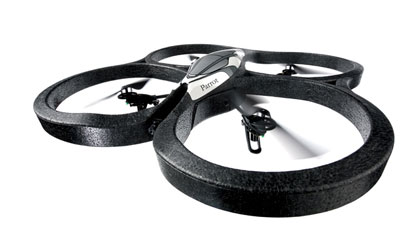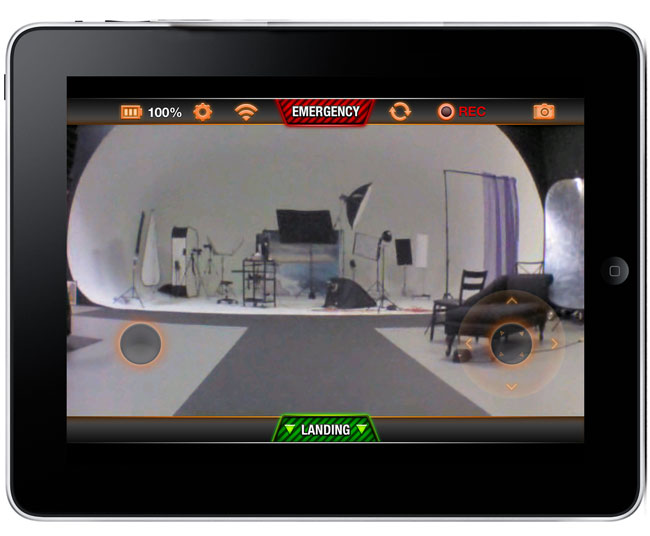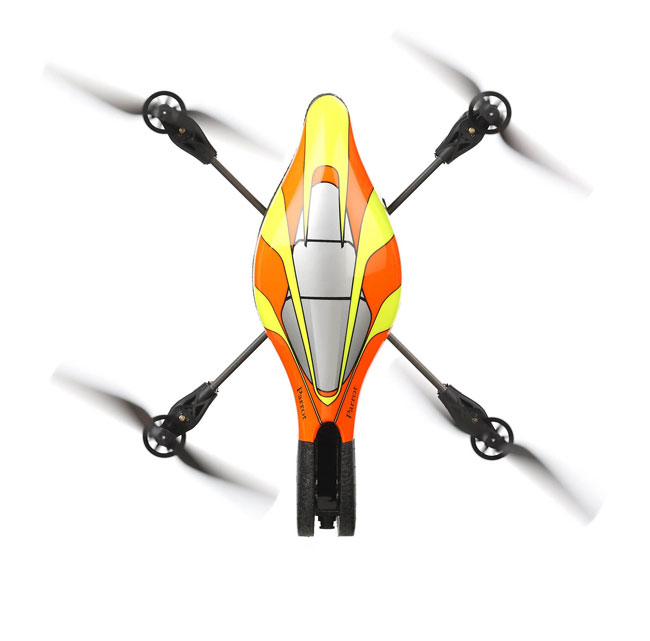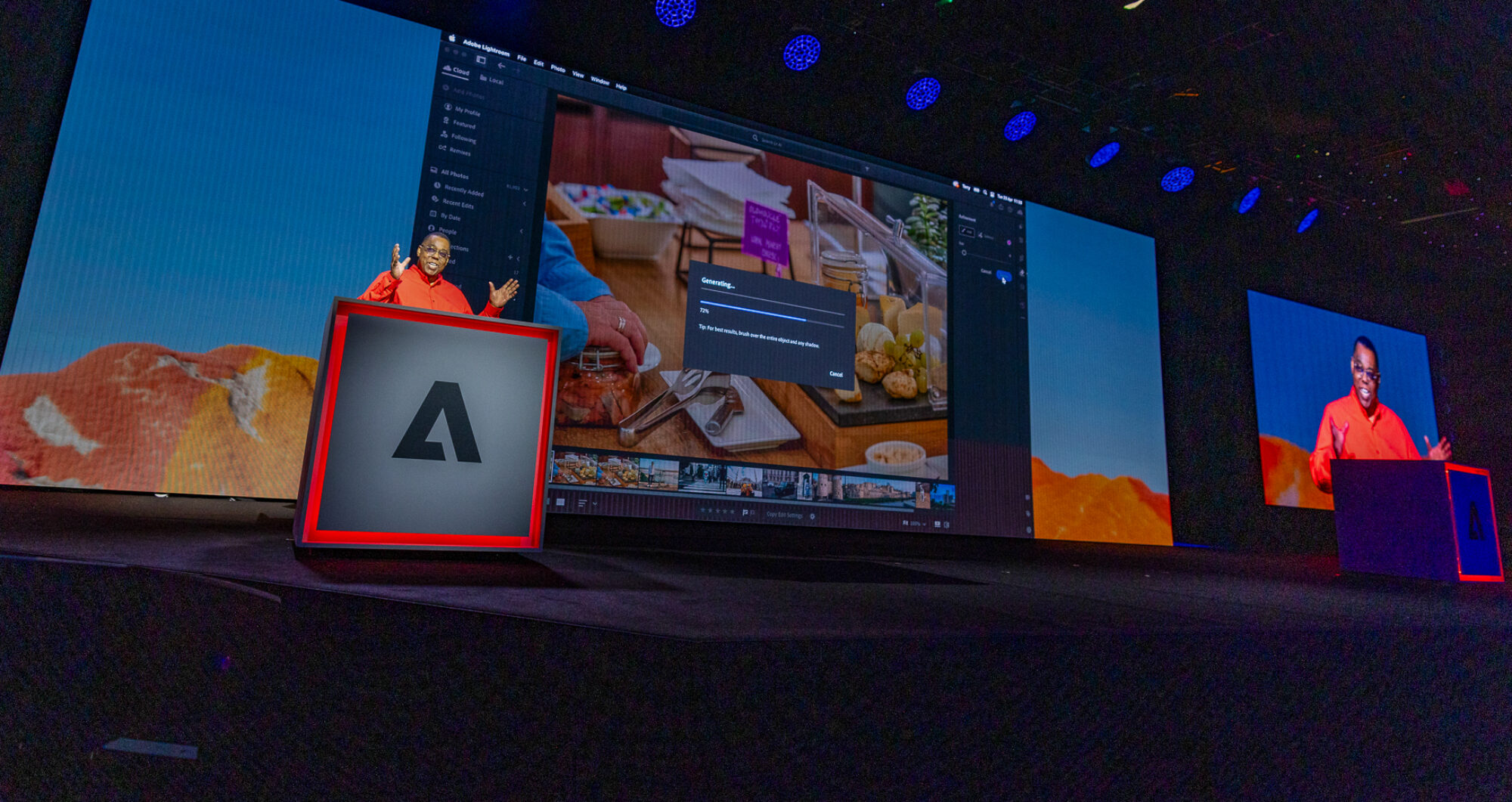
When the original AR.Drone came out I have to admit that I immediately dismissed it as a “toy” and I had very little interest in it. Sure, like any toy it would be fun to play with for a while. However, like many other toys you could quickly lose interest. Therefore I never bought one. Not even for the “cool (aka geek) factor”. Then the AR Drone 2.0 came along and it added something that I thought would be useful. The AR Drone 2.0 adds a better camera that does video at 720p HD. Yes, this raised an eyebrow and I decided to take a look. I did a pre-order and my AR.Drone showed up a couple of days ago. I figured I might have a use for this on set, especially on location shoots to do fly arounds of the set and the area that I’m photographing.
What’s Great…
The great thing about this little drone is that it’s light weight and very easy to fly. It doesn’t come with a remote control! You actually fly it from your mobile device (iOS or Android). I downloaded the App on my iPad and iPhone. The AR Drone 2.0 has it’s own built-in WiFi network. Once you charge the battery and pop it in, it powers up and starts broadcasting a network. You connect to this adhoc network from your device and then launch the AR Drone App (a free download). You see what the AR Drone sees right on your device. Using the accelerometers in your iPad, iPhone, etc. you tilt the device to control direction. There’s an on screen joystick to turn the drone. If you suddenly lose control, just take your fingers off the screen and the Drone will hover in place.

Since the built-in camera is always running you can tap the record button within the App and start recording/streaming video from the AR Drone right to your mobile device. Very Cool! The App even allows sharing directly to YouTube.
Here’s a sample video I did flying around my photography studio while a friend also video’d the AR.Drone 2.0 itself using my iPhone 4s:
What’s not so great…
Battery life is still relatively SHORT! You get one rechargeable battery and charger and the battery last for about 10 minutes of flying. Then you’ll need about 90 minutes to charge it back up. Unless you plan to do really short flights/videos, you’ll definitely want to have a couple of charged batteries on hand (about $35 each). It’s light weight and while that’s a good thing for travel, it means that a strong wind will take it away. Since it works via WiFi you’ll also have limited range. Like most small cheap HD cameras, this one doesn’t do well in low light. With a small lens/sensor comes lower quality video in low light. However, with enough light the video is more than acceptable for my needs.
The Bottom Line

The AR.Drone 2.0 is an improvement over the original! Adding 720p Video Recording makes it useful as a tool. On a calm day I can really see some great outdoor uses for it.
You can get the AR.Drone 2.0 for about $299 here.



So what about Still photos?
Yes, you can take still photos too.
Terry,
in your opinion could the still photos be used for things like exterior real estate photos and be of good enough quality to give to clients?
Yes as long as you kept it steady (no wind). Since it would be outside with available light the quality should be good for what you want for.
Thanks!
I see a big opportunity for the real estate market and vacation rentals.
Ha ha! Your cool gadget review will not seduce me into spending yet another $300! My willpower has overcome your awesome review.
…On the other hand, I just bought a new external hard drive this morning because I need more space for photos and my budget is tapped. I also added the AR.Drone 2.0 to my Amazon wishlist… so I guess I’ll be getting one after the next paycheck.
Nice review video too! Thanks!
I haven’t seen the conversations on forums myself, but I heard from a photographer friend of mine that drones used for commercial photography purposes outdoors may soon be controlled by the FAA and it’s under regulatory consideration. Apparently there are no new laws yet, but pilots who earn money from aerial photographers are fighting the drone competition. They want drone operators to be required to have a pilot’s license.
Here is the article.
http://www.nytimes.com/2012/02/18/technology/drones-with-an-eye-on-the-public-cleared-to-fly.html?_r=2&hp
Larry, there was an article in the NYT about a $3000 quadcopter rig that carries a DSLR. The range and height were far greater than the AR Drone. My impression, the issues were privacy and homeland security. I’ll try to find it and post back.
Terry, There’s a National Geograhic photographer on assignment in Africa using a professional multi-copter made in Germany. Go to the MikroKopter web site where they have the link. There is a lot of interest in RC aerial photography, but the entrance fee for a rig that will carry a professional DSLR is pretty high — but still much lower than renting a helicopter and pilot!
Get a higher mAh battery. The drone comes with a 1,000 but grab a 2,000 or 2500, the thing flys for almost 30 minutes at a cost of a couple extra grams. Remove the indoor hull (40 grams) and you balance the difference out.
where did you get the high capacity battery? And since I’m going to be a first time flyer, can the big battery, work with the shroud on? or is it too unstable.
Your link to Amazon is actually pointing to the page for the first version of the drone. Amazon does have a separate product page for the 2.0 version at the same price, but it says the release date is not until May 1.
Thanks. I’ve updated the link.
Hi,
@ Zach: The website that sells 2500AH accu with the right size to fit in writes about 17 min. fly time and with a warning not fly risc manovers with the drone with that battery.
Do you test 30 min. fly time? And I want to say: You need a extra charger for this batteries, too.
Kind regards
Ralf
Sadly, I’m not sure the still image quality will be good enough for real estate listings.
I tested the new AR.Drone 2.0 at Brookstone and tried a still image, which the salesperson nicely texted to me. It appears to only be 1024 x 576 (193KB). EXIF is non-existent so no ISO, shutter speed, etc. Best guess is that it’s a frame grab from the movie.
The image seems to have a significant fish eye effect (eg, needing a good +40 distortion compensation in Lightroom 4). There doesn’t seem to be a profile for it yet, but oddly the 100-400mm+1.4X seems to do a decent job on the edges. Of course, correcting the fish eye requires a significant crop to create a rectilinear image, in my small test case, it reduced down to 978×510 (!)
Under the store’s lighting noise wasn’t bad. But, there was significant motion blur. Even inside (ie, in the store), “auto-hovering” was not particularly steady. Apparently, the air currents from the mall into the store created a fair amount of movement, requiring the drone to compensate.??Flying it was ridiculously simple, and lots of fun. But out of the box, it doesn’t seem to be a serious tool for still photography.??One “upgrade” would be to mount a GoPro HD to it, but it more than doubles the cost and I’m not sure the still quality would be much improved.??The possibilities are incredibly enticing, but it seems a Mikrokopter solution is still necessary for satisfactory stills. What a great time to be alive!?